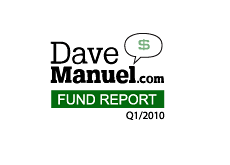Stock Options Lesson: The Strangle
The strangle is probably one of my favorite options plays. I enjoy this play because if I am unsure as to whether or not a stock will go up or down, but I am sure that it will make a big move one way or another, I'll employ a strangle on the stock. Let me explain.
When you are putting on a strangle, you are hoping that the stock makes a big move in either direction, but you don't really care which direction. Let's say that XYZ is trading at $50. They are a biotech company, and a drug that they help develop is coming up for an FDA decision over the next week. If the FDA approves their drug, they will receive millions upon millions in milestone payments. If their drug doesn't get approved, it will be a huge blow for the company, as their entire business is built upon this drug.
So you aren't sure which was the decision is going to go, but you want to participate in the move somehow. This is the perfect situation for a strangle. Let's say that the stock is trading at $50. You are looking to buy slightly out of the money calls and puts, with the expiry as close as possible. You want as little time premium as possible, so that you will enjoy a higher % gain on the move. So in this case, you would look at buy say, $55 calls and $45 puts, with the nearest possible expiry dates.
Let's say that the calls are trading at $1.45, and the puts are trading at $1.40. This puts your total investment at $2.85. So if you bought one call and one put, your total investment would be $285.
What is the best case scenario for you? A major move in either direction. Let's say that the FDA rejects the drug, and the stock falls to $30 overnight. Your calls are totally worthless, but your puts are worth big money, making the trade very lucrative. If the puts are suddenly worth $25, then you have banked over $2000 on the trade. Or if the FDA accepts the drug, and the stock soars to $70, your calls will be worth a ton.
What's the worst case scenario? That's the stock does nothing, or makes a very small move. If there isn't a big movement, you will lose from reduced volatility in the options and time decay, and you will probably lose 50-60% of your investment. In order to minimize the effects of time decays, I try and purchase the options just before the news is supposed to take place.
Your absolute maximum potential loss is $285. Your worst case scenario is that the options expire worthless. You can not lose more than $285, as you are purchasing calls and puts, and not selling them.
How do you figure out your gains? Let's say that the stock did tank to $30. You sell your put option for $25, so that side of the trade is worth $2500 to you. On the other side, your calls are now worthless, so you will receive zero from them. So, your total investment was $285, and you got your initial investment back, which as $285, and realized $2215 in total profits on top of that.
Strangles are not for the faint of heart. Timing is everything. You can't possibly have a big score every time; you are hoping for a big score every 3-4 times in order to pay for the strategy. Done right, they can be very profitable.
Filed under: Stock Market Education | General Knowledge



